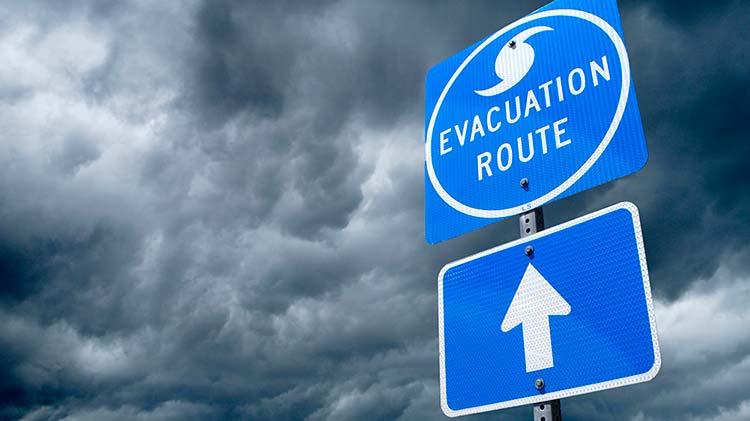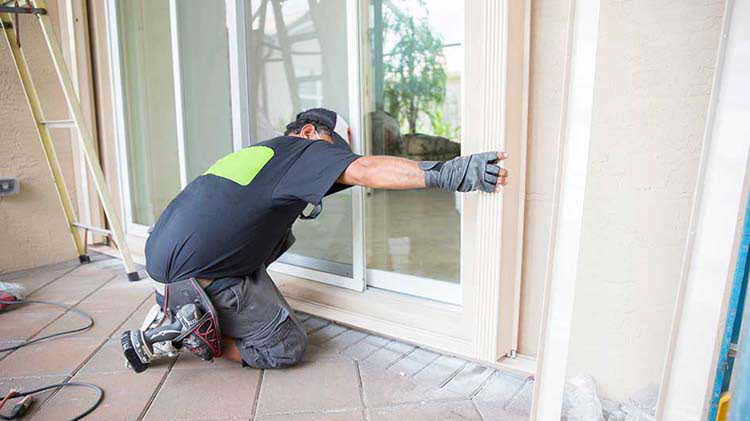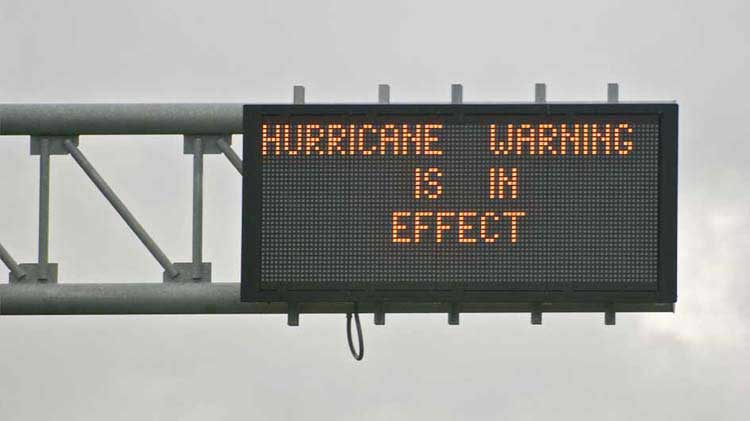Weathering the storm: essential tips for hurricane preparedness
Actions you can take to help protect your family, home and property when preparing for a hurricane.
The destructive force of a hurricane should never be taken lightly. These powerful storms can unleash devastating winds, torrential rains, storm surges and tornadoes causing extensive damage. And while you can't stop a hurricane from occurring, there are steps you can take to prepare for it and help protect your home from its brutal force. Here are hurricane preparedness safety tips to help protect your home, and possibly even save your life.
Before a hurricane hits
Walk through and survey your home to create a home inventory of your possessions. This can be in the form of a written list, digital app or video — or a combination of any of these tools. Go with whatever makes it the easiest for you to document your belongings. An inventory can help during the claims process in the event of a covered loss.
Prepare with water. Fill containers, buckets or tubs so that you can flush your toilets and wash your hands in the event you are allowed to stay home and your water supply is cut off. It can also be helpful to have sealable, frozen bags of water to help keep frozen items cold if you lose power.
Consider a generator for backup power. An emergency backup generator, whether a home standby or portable, can help keep some appliances running during a power outage — which could take days or even months before power is restored. Plan ahead if you decide to invest in a generator. Generator availability may be in short supply if a hurricane is already on its way.
Secure art and wall hangings. See that art and wall hangings are properly secured or relocated to an interior location in your home.
Move vehicles to a higher location. Avoid parking vehicles under trees or power lines.
Collect and secure important documents. Ensure documents are stored in a bolted-to the-ground safe or easily accessible in the event of an evacuation.
How to prepare your house for a hurricane
In advance of a hurricane, think about adding strength to the structure of your home to help prevent wind and water damage. If a hurricane evacuation order is given, go to a shelter as directed by local authorities or consider friends or relatives outside of the evacuation area. Learn more about preparing a hurricane evacuation plan and home emergency kits.
Hurricane-resistant doors
Consider installing hurricane-resistant entry doors with the following in mind:
- All entry doors should have three hinges and a dead bolt lock with at least a one-inch bolt throw length.
- If you have double-entry doors, secure the inactive door with head and foot bolts that extend through the door header and into the subfloor.
- Door framing should be securely anchored to the wall structure using fasteners that are at least three inches long.
- Patio doors should be made of tempered glass.
- Outward-opening doors are more resistant against strong winds and air pressure changes. In hurricane-prone states such as Florida, building codes require outward opening doors.
- Adding hurricane shutters or panels that cover the doors may help provide extra protection.
Hurricane-resistant basement and foundation
- Fill basement cracks with hydraulic cement, and coat walls with waterproof masonry cement.
- Check your sump pump and confirm it's ready for the storm.
- Consider a backup power supply/battery system for sump pumps as power failure is frequently an issue during storms.
- Add caulk to any cracks or holes in your foundation where cables, pipes or wires enter your home.
Hurricane garage door reinforcement
- Install hurricane-resistant garage doors or use a steel bracing kit to support the door against wind pressure.
- Consider protecting your garage door with a shutter or screen rated for wind pressure and debris impact.
Hurricane roof protection
Hurricane-force winds can cause shingles to peel off, especially if edge shingles are not secured or the adhesive on their tabs has failed. A roofing professional can evaluate your roof and suggest improvements.
- Attach hurricane clips at the studs and rafters.
- To help anchor the soffits, (the exposed siding under your roof rafters) to your home, have a professional apply a bead of polyurethane sealant between the wall and the trim into which the soffit panels are inserted. They might also use stainless steel screws or apply caulk where the joint between two soffit panels meets the trim.
- If you are installing a new roof:
- Ask a roofing professional to set extra roofing cement under shingles to help keep them in place during a hurricane.
- Ensure the roof deck is sealed with a secondary water barrier installed below the roof covering.
- Consider using impact-resistant roofing materials for added protection.
- Ask a roofing professional to set extra roofing cement under shingles to help keep them in place during a hurricane.
Prepare your exterior property for the hurricane
- Move any non-secure items or non-structural elements and store them in your home, garage or shed. Items might include:
- Patio furniture
- Grills
- Garbage bins
- Porch swings
- Landscaping ornaments, such as sculptures or bird baths
- Confirm your shutters are working properly and fit securely.
- Install resistant permanent shutters that meet state building code standards. Impact-resistant windows, shutters and doors should have a proof of compliance identified on a sticker, label or imprinted into the product. Impact-resistant windows may not need shutters depending on a local building codes and the level of protection desired.
- Shutter types:
- Bahama - also referred to as Bermuda shutters, are designed with a top hinge and open outward. These shutters offer a combination of light and air flow, while providing storm protection. They are commonly seen in tropical regions.
- Board and batten - are made of vertical boards held together with a narrow cross panel. These shutters are typically found on rustic or farmhouse style homes.
- Louvered - feature angled slats, which allow light and air circulation to pass through. This type of shutter is frequently seen on classical homes.
- Raised panel - resemble the look of kitchen cabinets or doors with their solid single or double raised panels. The raised panel shutters blend well with many homes.
- Shutter types:
- Consider replacing gravel or rock landscaping materials with shredded bark.
- Safely trim trees and bushes to help make them more wind resistant. High winds can result in trees and branches falling on your home, which can cause significant damage to the structure.
- Clear gutters of any debris so water can flow freely.
- If you have a pool, cover the filter pump.
- If you live in a mobile home, inspect all straps and tie-downs for wear and have repairs made if necessary.
- If you are leaving an RV or a vehicle, try to store it in a garage or secured facility.
- If you are mooring a boat, see that it is properly secured. If your boat is ashore in a jack stand, strap the boat down when possible. Discover more tips to help protect your boat during a hurricane.
Be prepared for an emergency exit
Get your family ready
- Go over evacuation plans and discuss where to meet if separated.
- Be on the look-out for advisory, watch and warning information on the storm’s progress.
- Store emergency phone numbers in your phone and discuss who to contact for a check-in.
- Have emergency cash available in case banks and ATMs are not available.
- Grab your emergency kit along with essentials like your cell phone, chargers, money, identification and medications.
- Safely shut off all utilities: gas, electricity and water.
- Locate the nearest shelters.
Get your pets ready
- Contact out-of-town family members, pet-friendly hotels or shelters where you can drop off your pet.
- Prepare an emergency kit for your pet with essentials like food, can opener, leash, medical records with proof of vaccinations, toys, treats, a pet first aid kit, and a litter box or waste bags.
- If you must leave your pet behind, leave a sticker for emergency services to make them aware your pet is at home.
Get your car ready
- Fill up your gas tank.
- Keep an emergency kit in your vehicle.
- Park your vehicle in a garage or covered area.
You might also consider flood insurance because a standard home insurance policy doesn't cover damage caused by a flood. Flood insurance is available through the U.S. Government's National Flood Insurance Program, and can be purchased in participating communities. Insurance agents like those at State Farm® that are enrolled in the NFIP Direct Program can write and service flood insurance coverage directly through the federal government. There is generally a 30-day waiting period for the policy to go into effect.




